3DWarehouse
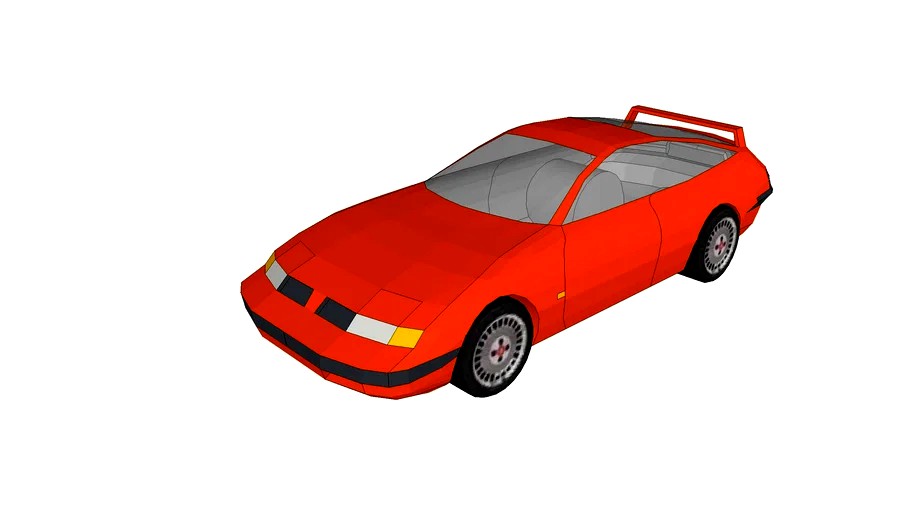
'85/'86 Kateshikikato Jeto A-Race Sport/Turbo
by 3DWarehouse
Last crawled date: 9 months, 1 week ago
After the company has been learning new and powerful technologies it has come to an experiment for to create the world's first jet-petrol hybrid hypercar in the world. The naturally aspirated 8.6 liter boxer 10-cylinder outputed a fasinating 521 ps and 456 lb ft, while the jet engine produced 2103 ps and 1888 lb ft, which resulted in 2624 ps and 2344 lb ft of torque and a 10-speed manual gearbox. It weighed 4068 lbs (1865 kg.) The final result got critical acclaim and praise because of it's outstanding performance and was soon after release reviewed by Top Racer, described by Jimmy Peterson as 'pushing the meaning of hypercar. Crazy as hell performance with a pure and comfortable interior.', after the crew crashed the car because of it's unexpected performance. It did accelerate from 0-100 in 2.55 seconds and had a massive top speed of 651 km\h (646 for the automatic version). The weight distributon was 59/41. It's air suspension allowed for adjustable ride height, making it a car for both off-road cruising and trackday racing. It was also the only cars in that era to have driving assists, implemeting the GCSS (GPS Control Safety System). It had an 8-bit CPU that monitored the car's location, that forces to slow down automatically on turns, and slow down more forced if the turn is sharper. Turns and straight lines are stored as 'squares', that are then scaled by an algorithm thatworks as follows: 'for every in square we will generate 4 out squares. First, set all 4 to the color of the square we are currently scaling (as nearest-neighbor). Next look at the pixels up and to the left; if they are the same color as each other, set the top left pixel to that color. Continue doing the same for all four squares, and then move to the next one.' This system was flawed as the car was hot as a grey import and the only locations actually programmed in the car itself were the maps of Kyoto and Tokyo (later revisions added more location such as a more complete map of Kyoto). Later, an automatic version was released as the B-Race (while the base model is the A-Race) whose 9-speed automatic gearbox has left only 2411 ps and 2267 lb ft of torque and weighs 4229 lbs (1918 kg). It also came with a stiffer suspension setup and full rollcage (as opposed to the A-Race's half rollcage). The next year, another new model came out, called the A-Race Sport. It came with a different flat-12 engine that outputted 768 ps and 867 and an uprated jet engine producing 2227 ps and 2345 lb ft, producing 2995 ps and 3212 lb ft of torque. It was also the first model offered as a 2+2 coupe (as the others were hyper-sedans, or four-door targas), that and a stripped down interior without luxury features like reduced weight and improved acceleration, capable of 0-100 in only 2.33 seconds and a top speed of 672 km\h. It also had wider tires, a multi-port fuel injector replacing the original single-port design, hood vents, longer gearing, the stiffer suspension and full rollcage from the B-Spec, a spoiler for downforce and a welded differential, all for increased MPG, performance and also a drastic improvement in handling and reliability. The car weighed about 3901 lbs (1769 kg). In 1986, two years after the original car was launched, a minor facelift was made. All of the cars got strut bars, new locations were added to the driving assist system and also a better acurracy of when to brake or not because of a more efficient (but basically the same) algorithm, renamed the GCSSr (r stands for revised). The pistons were made out of forged steel instead of part cast iron part steel, improving the weight distribution slightly (57/43) and making the car lighter, improving handling. That year was also released a new edition of the car, called the A-Race Turbo. The jet engine is the same as the one in the Sport trim, but the engine is turbocharged, outputing 1002 ps and 989 lb ft and 3229 ps and 3334 lb ft of torque overall. The rear-wheel drivetrain was replaced with an all-wheel drivetrain, hugely improving handling, making the car go through corners at much faster speeds. It is also one of the only two-seater model in the range, and the lack of back seats and a furthermore stripped down interior makes the car lighter. Acceleration was 0-100 in 2.18 seconds and a top speed of 688 km/h. Weight was 3811 lbs (1728 kg). As sales were going up and were almost getting higher than the number of cars made, Kateshikato made a more affordable model: the C-Race. The C-Race was an A-Race without back doors or back seats and with a shorter wheelbase. It was also twin-carbureted, decreasing a total of 68 ps and 47 lb ft, and had a downrated jet engine, outputting a total of only 2094 ps and 1909 lb ft of torque. It had an open differential, no foglights and no rollcage. It accelerated from 0-100 in 2.64 seconds and had a top speed of 621 km/h. In 1989, the car wasgiven a massive recall of 1 millioncars because of the problem that the engines would sometimes overheat to the point of exploding after going ~570 km\h. This was due to a problem in the design of the boxer-10 engine (flat-12 versions like the Race and Turbo were unaffected). While Kateshikato initially decided to burn the cars and discontinue the models, sales were rocketing (intentional jet engine joke) and it was their mascot car. As such, a major facelift was released in 1990. The original sealed beams were replaced with composite lights offering much better lighting. The targa tops were now body-colored and were made out of carbon fiber instead of fiberglass, decreasing weight. The pop-up headlights were replaced with 'bug-eyed' fixed headlights, the instrument cluster is more modern and is different (aka. speeedometer is bigger while the tachometer is smaller and is now positioned in the center), the original mechanic fuel injection is replaced with an electronic system that vastly increased fuel efficiency. The location algorithm was entirely rewritten - the new system is named NLRSS (New Location Regonition Safety System). It goes further than GCSS by using a 2-stage set of interpolation rules. These better handle more complex patterns such as keeping corners smooth (instead of making the cpu think it's all diagonal lines). The suspension got stiffer on all models and got slightly lower by deafult and the spoiler is now adjustable on the Race and Turbo models. The boxer engine was replaced with flat-10, the flat-12 turbo gained a second turbo and a flat-14 was added. The A-Race Turbo was given a 10-speed dual-clutch transmission instead of the 11-speed manual in order to retain boost through gears after it became the A-Race Twin Turbo and dual airbags were made standard All of the models now got sportier 4WS steering. The C-Race got the limited slip differential from the A-Race. Later that year was introduced the Z-Race, a luxury oriented version of the car. It has the same jet engine from the Twin Turbo but a naturally aspirated flat-14 outuptting 1280 ps and 1116 lb ft, 3507 ps/ 3461 lb ft of torque including the jet engine. It had all the features from all the models plus a casette tape player and cd player, radio with built-in songs included if there's no signal, 5 cupholders (original had 3), headlight washer and an unique 11-speed manumatic gearbox. To celebrate the ten years anniversary of the car, five special run-out models were made and sold, which were gold plated Z-Race's with a special decal on the back window saying 'Saying goodbye to the purest japanese sports car...' #fastcar #fictional #hypercar #jetcar #jetengine #megacar #supercar #turbo
Similar models
3dwarehouse
free

'90 Kateshikikato Jeto A-Race Sport/Twin-Turbo
...dow saying 'saying goodbye to the purest japanese sports car...' #car #hypercar #jet #jetcar #jetengine #sports #supercar
3dwarehouse
free

'90 Kateshikikato Jeto A-Race/B-Race
...odbye to the purest japanese sports car...' #car #facelift #hypercar #jetcar #jetengine #motorsports #sports #supercar #turbo
3dwarehouse
free

'84 Kateshikikato Jeto A-Race
...window saying 'saying goodbye to the purest japanese sports car...' #car #ficitional #hypercar #jetcar #megacar #supercar
3dwarehouse
free

'84 Kateshikikato Jeto B-Race
... back window saying 'saying goodbye to the purest japanese sports car...' #hypercar #jetcar #jetengine #megacar #supercar
3dwarehouse
free

1991 Posher Kinect GT
...e turbo rs model had a 8-barrel, 3.8 flat-6 twin-turbocharged engine producing 419 hp @6650 rpm and 331 lb-ft of torque @5000 rpm
3dwarehouse
free

'09 Kateshikato Jeto A-Race/B-Race
...spacious interior while retaining the same size, and retaining similar performance while vastly improving weight distribution, crash safety and...
3dwarehouse
free

VW W12 Nardo
...ill to 100 km/h (62 mph) in about 3.5 seconds, and had a top speed of 357 km/h (221.8 mph). #syncro #phaeton #continental #veyron
3dwarehouse
free

Avala Watanabe 1990s
...speed. top speed: 360 km/h engine: 1.5l engine based on: nissan 240sx all elements and models belongs to their respective owners.
3dwarehouse
free

1985 Boxy Fireburst Coupe 6.0 LT
... felt worryingly light on the tail. they can be found on ebay for about $2440-$5760 for this particular model. #boxy #car #sports
grabcad
free

Ominous (Concept Car)
...mission: 6-speed manual
power: 492 hp @ 5400 rpm
torque: 425 lb-ft @ 3700 rpm
weight: 3320 lbs
0-60mph: 3.9s
top speed: 178mph
Kateshikikato
3dwarehouse
free

'84 Kateshikikato Jeto A-Race
...window saying 'saying goodbye to the purest japanese sports car...' #car #ficitional #hypercar #jetcar #megacar #supercar
3dwarehouse
free

'84 Kateshikikato Jeto B-Race
... back window saying 'saying goodbye to the purest japanese sports car...' #hypercar #jetcar #jetengine #megacar #supercar
3dwarehouse
free

'90 Kateshikikato Jeto A-Race/B-Race
...odbye to the purest japanese sports car...' #car #facelift #hypercar #jetcar #jetengine #motorsports #sports #supercar #turbo
3dwarehouse
free

'90 Kateshikikato Jeto A-Race Sport/Twin-Turbo
...dow saying 'saying goodbye to the purest japanese sports car...' #car #hypercar #jet #jetcar #jetengine #sports #supercar
Jeto
3dwarehouse
free

domek :D
...domek :d 3dwarehouse jeto fajn...
3dwarehouse
free

Markova budova
...markova budova 3dwarehouse jeto firma která vyrábý...
3dwarehouse
free

panelovy dum Třinec-erbenova
...panelovy dum třinec-erbenova 3dwarehouse jeto středně velky dum bily hnědy a střecha je...
3dwarehouse
free

'84 Kateshikikato Jeto A-Race
...window saying 'saying goodbye to the purest japanese sports car...' #car #ficitional #hypercar #jetcar #megacar #supercar
3dwarehouse
free

'09 Kateshikato Jeto A-Race/B-Race
...va se 6 using a circular pad that can be pressed as a mouse. #car #fictional #hypercar #jet #jetcar #jetengine #megacar #supercar
3dwarehouse
free

'84 Kateshikikato Jeto B-Race
... back window saying 'saying goodbye to the purest japanese sports car...' #hypercar #jetcar #jetengine #megacar #supercar
3dwarehouse
free

'90 Kateshikikato Jeto A-Race/B-Race
...odbye to the purest japanese sports car...' #car #facelift #hypercar #jetcar #jetengine #motorsports #sports #supercar #turbo
3dwarehouse
free

'90 Kateshikikato Jeto A-Race Sport/Twin-Turbo
...dow saying 'saying goodbye to the purest japanese sports car...' #car #hypercar #jet #jetcar #jetengine #sports #supercar
86
3d_export
$17

F-86 Sabre
...f-86 sabre
3dexport
f-86 sabre
turbosquid
$15

Chair 86
...alty free 3d model chair 86 for download as max, obj, and fbx on turbosquid: 3d models for games, architecture, videos. (1497546)
turbosquid
$12

Table 86
...alty free 3d model table 86 for download as max, obj, and fbx on turbosquid: 3d models for games, architecture, videos. (1503919)
turbosquid
$10

Lamp 86
...yalty free 3d model lamp 86 for download as max, obj, and fbx on turbosquid: 3d models for games, architecture, videos. (1500814)
turbosquid
$10

Bedcloth 86
...y free 3d model bedcloth 86 for download as max, fbx, and obj on turbosquid: 3d models for games, architecture, videos. (1531164)
turbosquid
$20

Bath 86
... free 3d model bath 86 for download as max, dxf, fbx, and dwg on turbosquid: 3d models for games, architecture, videos. (1277153)
turbosquid
$30

Pendant 86
... available on turbo squid, the world's leading provider of digital 3d models for visualization, films, television, and games.
turbosquid
$29

Landscape 86
... available on turbo squid, the world's leading provider of digital 3d models for visualization, films, television, and games.
turbosquid
$23

Building 86
... available on turbo squid, the world's leading provider of digital 3d models for visualization, films, television, and games.
turbosquid
$9

Office 86
... available on turbo squid, the world's leading provider of digital 3d models for visualization, films, television, and games.
85
3d_export
free

t34-85
...t34-85
3dexport
t34-85 low poly
turbosquid
$16

Chair 85
...alty free 3d model chair 85 for download as max, obj, and fbx on turbosquid: 3d models for games, architecture, videos. (1497547)
turbosquid
$15

Curtain 85
...ty free 3d model curtain 85 for download as max, obj, and fbx on turbosquid: 3d models for games, architecture, videos. (1436002)
turbosquid
$10

Lamp 85
...yalty free 3d model lamp 85 for download as max, obj, and fbx on turbosquid: 3d models for games, architecture, videos. (1500813)
turbosquid
$6

Table 85
...alty free 3d model table 85 for download as max, obj, and fbx on turbosquid: 3d models for games, architecture, videos. (1503917)
turbosquid
$20

Bath 85
... free 3d model bath 85 for download as max, dxf, fbx, and dwg on turbosquid: 3d models for games, architecture, videos. (1277152)
3d_ocean
$20

85 Lamps Chandelier
...ier by droog, designed by rody graumans. pack containts highly detailed model of 85 lamps chandelier and realistic v-ray shaders.
turbosquid
$65

Su-85
... available on turbo squid, the world's leading provider of digital 3d models for visualization, films, television, and games.
turbosquid
$29

Landscape 85
... available on turbo squid, the world's leading provider of digital 3d models for visualization, films, television, and games.
turbosquid
$23

Building 85
... available on turbo squid, the world's leading provider of digital 3d models for visualization, films, television, and games.
Race
3ddd
$1
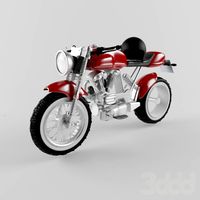
race
...race
3ddd
мотоцикл
race
turbosquid
$15

Racing
...d
royalty free 3d model racing for download as obj and blend on turbosquid: 3d models for games, architecture, videos. (1474846)
3d_export
$5
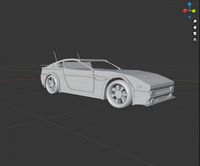
racing car
...racing car
3dexport
racing car
3d_export
$5

racing helmet
...racing helmet
3dexport
helmet 3d model for motocross or racing cars
3d_export
$5
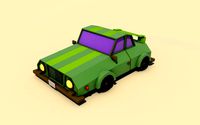
racing car
...racing car
3dexport
low poly classical racing car model
3d_ocean
$29

racing car
...cing car rim seat speed sport sport car tyre
detailed 3d model of racing car. all materials are included. model is ready for use.
3d_ocean
$29
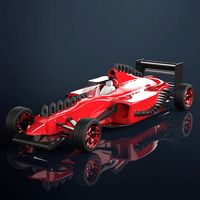
racing car
... rim seat speed spoiler sport sport car tire
detailed 3d model of racing car. all materials are included. model is ready for use.
3d_ocean
$15

Race Car
...race car
3docean
a very detailed and realistic 3d model of a race car, which was created with polygons.
3ddd
$1
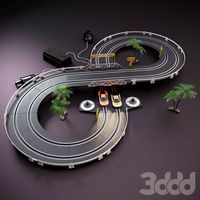
Turbo Racing
... машинка
игрушечная гоночная дорога "turbo racing". почувствуй себя настоящим гонщиком.
3d_export
$100

start race motocross
...start race motocross
3dexport
start race motocross
Sport
3d_export
$9

sport car
...sport car
3dexport
sport car
3d_export
$5

bicycle sport
...bicycle sport
3dexport
bicycle sport
3d_export
$5

Aventador sport
...aventador sport
3dexport
sport version aventador
turbosquid
$15

Sport
... available on turbo squid, the world's leading provider of digital 3d models for visualization, films, television, and games.
turbosquid
$10

Sport
... available on turbo squid, the world's leading provider of digital 3d models for visualization, films, television, and games.
turbosquid
$5

Sport
... available on turbo squid, the world's leading provider of digital 3d models for visualization, films, television, and games.
3d_export
$100

Sport 17
...sport 17
3dexport
shoe sneakers sport man
3d_ocean
$89

Sport Bike
...e
3docean
bike bike sport sport
hight detailed sport bike, file include 3ds max file model, 3ds file, 3ds max vray setuped model.
3ddd
$1

sport shoe
...sport shoe
3ddd
обувь
highly detailed sport shoe
3d_ocean
$39

Sport bike
...port bike
3docean
bike landscape opera sport street transport wheel
fully detailed sport opera bike with high resolution textures
Turbo
turbosquid
$45

TURBOS
... available on turbo squid, the world's leading provider of digital 3d models for visualization, films, television, and games.
turbosquid
$45

TURBOS
... available on turbo squid, the world's leading provider of digital 3d models for visualization, films, television, and games.
design_connected
$13

Turbo
...turbo
designconnected
gubi turbo computer generated 3d model. designed by weisdorf, louis .
3d_export
$5

turbo
...turbo
3dexport
representation of an automotive turbine.
3d_ocean
$7

Turbo
...bo from the movie turbo.modeled in 3ds max 2014. 3d file formats included : max 2014 max 2011 obj fbx please rate when you buy :
turbosquid
$90

Turbo engine
... available on turbo squid, the world's leading provider of digital 3d models for visualization, films, television, and games.
turbosquid
$5

Blue turbo
... available on turbo squid, the world's leading provider of digital 3d models for visualization, films, television, and games.
turbosquid
$3

Turbo Truck
... available on turbo squid, the world's leading provider of digital 3d models for visualization, films, television, and games.
turbosquid
free

Turbo kit
... available on turbo squid, the world's leading provider of digital 3d models for visualization, films, television, and games.
3ddd
$1

Turbo Racing
... машинка
игрушечная гоночная дорога "turbo racing". почувствуй себя настоящим гонщиком.
